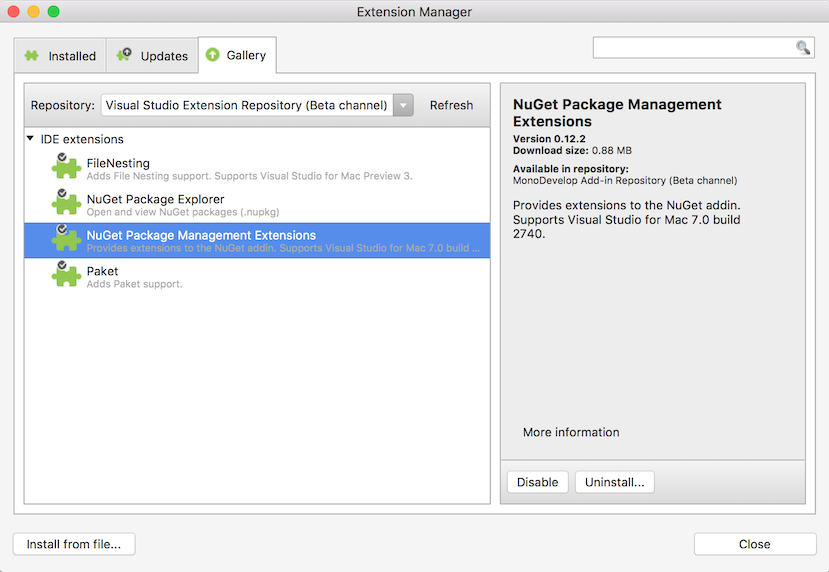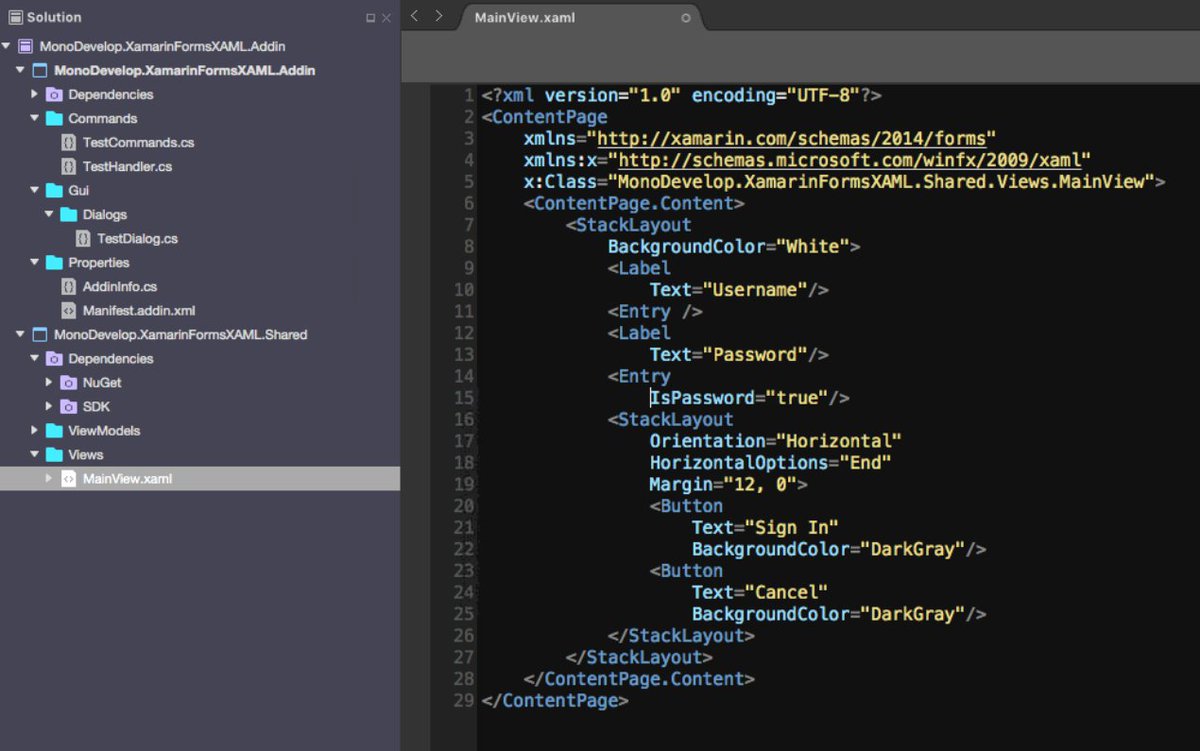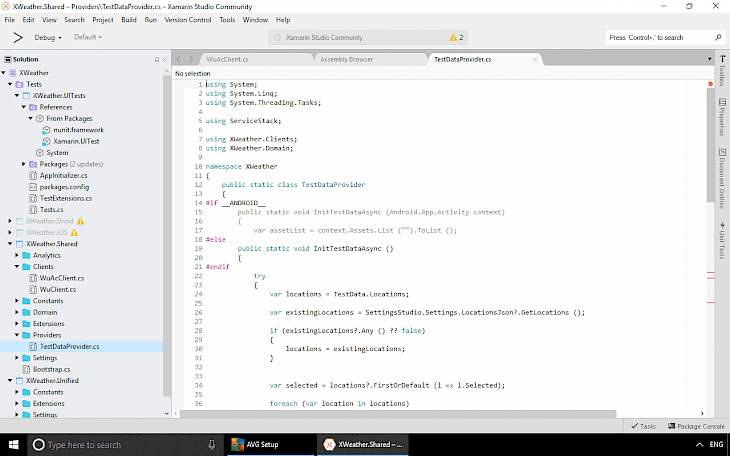


Under NUnit, you can create a project that contains NUnit tests. NET languages, inspired by Python, called Boo. Below the Boo heading are projects that work with non-Microsoft. Along with the usual options of C # and Visual Basic, you will see a couple of interesting solutions. On the left, you can see countless options for MonoDevelop solutions. To create a new program (here called solution), simply go to New → New Project, similar to Figure 2. On the left is the Solution Explorer frame, on the right is the main screen, below is the Task List, which displays errors, warnings, and notifications. If you've ever used Visual Studio or SharpDevelop, you'll see something very familiar. When starting MonoDevelop, you will see the IDE and the Welcome screen shown in Figure 1 below.įigure 1 : MonoDevelop's introduction page
VISUAL STUDIO FOR MAC MONODEVELOP MAC OS
You can also run MonoDevelop on Mac OS X, or use a version for Fink (), or follow the instructions posted on. Click on it to open the folder containing the MonoDevelop executable. After completing the installation process, you will see a Mono icon on the screen. Mono installers include all related dependencies and MonoDevelop itself. The easiest way to run MonoDevelop is to use the Mono 1.1.15_2 installer (you can download it from, under the heading " Linux Installer for x86 "). (Here we will take the example of Red Hat Fedora Core 5). MonoDevelop requires a Linux version running on the GNOME platform. MonoDevelop starts like a SharpDevelop IDE port, but then develops independently into Mono IDE for Linux desktops using GNOME.

Both IDE cannot run on Linux or Mac OS X. If you're developing on Windows, you can build Mono applications using Visual Studio or SharpDevelop. NET Framework built on Linux, Solaris, Mac OS X, Windows and Unix. This article is cited from Windows Developer Power Tools by James Avery and Jim Holmes, under license from O'Reilly Media Inc.


 0 kommentar(er)
0 kommentar(er)
